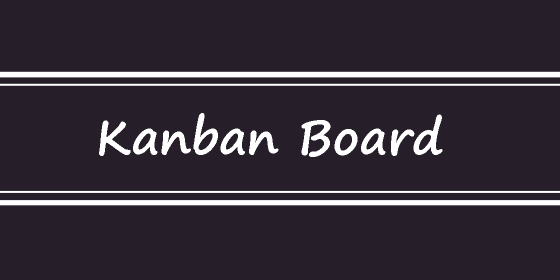Kanban Board

A Kanban Board is a visual management tool used to track and visualize work in progress (WIP) in an Agile or Lean environment. It is a fundamental component of the Kanban method, which aims to improve workflow efficiency and optimize the delivery of products or services.
The Kanban Board typically consists of columns that represent different stages of the workflow, and each column contains cards or sticky notes representing individual work items, tasks, or user stories. As work progresses, the cards move across the board from left to right, indicating their status in the workflow.
Key elements of a Kanban Board include:
- Columns: The columns on the Kanban Board represent the different stages of the workflow, such as “To Do,” “In Progress,” “Review,” and “Done.” The number and names of the columns can be customized to match the specific workflow of the team or project.
- Work Items: Each work item is represented by a card or sticky note on the Kanban Board. The card typically contains relevant information, such as the task description, assignee, priority, and due date.
- Work in Progress Limits (WIP Limits): Kanban Boards often include WIP limits for each column, indicating the maximum number of work items that can be in progress at any given time. WIP limits help prevent overloading the team and ensure a smooth flow of work.
- Visual Signals: Kanban Boards use visual signals, such as different colors or icons, to indicate the type or category of work items, making it easier to identify different tasks at a glance.
- Continuous Flow: Kanban Boards promote a continuous flow of work, where new items are pulled into the workflow only when there is available capacity, maintaining a steady and sustainable pace of work.
- Transparency: The Kanban Board provides transparency into the team’s work progress, making it easy for team members and stakeholders to understand the status of each task and the overall workflow.
- Flexibility: Kanban Boards are highly flexible and can adapt to changing needs and priorities. Teams can easily add or remove columns, adjust WIP limits, or introduce new categories as required.
Kanban Boards are widely used in various industries and domains, including software development, project management, manufacturing, and service delivery. They are particularly effective for visualizing and managing work that requires continuous improvement and high levels of collaboration.
By using a Kanban Board, teams can optimize their workflow, identify bottlenecks, and make data-driven decisions to enhance efficiency and productivity. It provides a shared understanding of the team’s progress and ensures that work is transparent and manageable, contributing to the overall success of the project or product development.